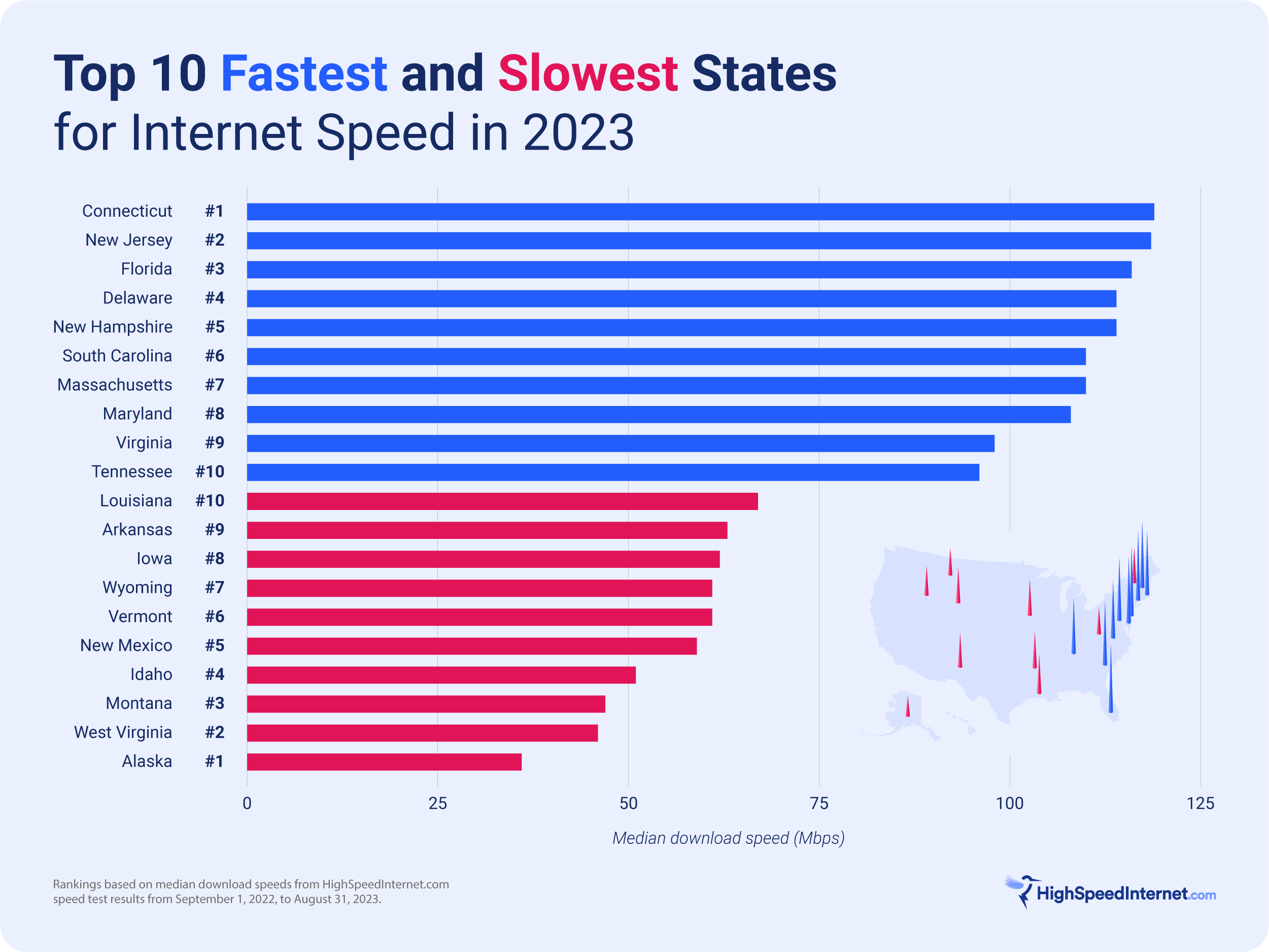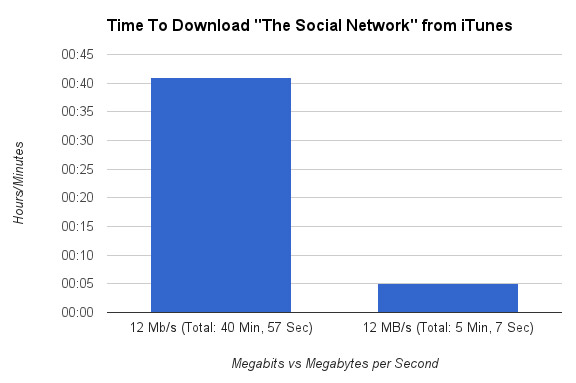Why Megabits Per Second Matter for Remote Work Efficiency
Why Megabits Per Second Matter for Remote Work Efficiency
Blog Article
Exactly How Megabits Per Second Effect Your Online Tasks
The concept of megabits per second (Mbps) plays a pivotal role fit our online experiences. As digital activities multiply, recognizing the effects of Mbps on streaming, video clip, and pc gaming conferencing ends up being progressively crucial. Greater Mbps can enhance efficiency and decrease interruptions, while poor rates may foster irritation and ineffectiveness. Examining your household's particular needs in relationship to these rates is necessary, especially as several gadgets try data transfer. The subtleties of exactly how Mbps affects numerous online tasks warrant more exploration, especially as our reliance on electronic connectivity proceeds to progress.
Recognizing Megabits Per Second
When thinking about internet rate, it's necessary to recognize the idea of megabits per second (Mbps), which serves as a conventional dimension for data transfer prices. This statistics measures just how much data can be sent over a web link in one second, offering a clear understanding of efficiency capabilities - Megabits Per Second. For context, one megabit amounts to one million little bits, and Mbps is frequently made use of to reveal transmission capacity for various on the internet tasks
A greater Mbps suggests a much faster internet connection, allowing customers to perform tasks such as downloading documents, browsing websites, and participating in on the internet pc gaming much more effectively. For circumstances, normal surfing requires around 1-5 Mbps, while streaming high-definition video may require 5-25 Mbps. Comprehending these demands is critical for figuring out the appropriate internet speed needed for particular activities.
Furthermore, the variety of tools attached to a network can influence overall performance. Multiple users streaming, gaming, or downloading concurrently can stress offered transmission capacity, causing slower rates - Megabits Per Second. Examining individual online behaviors and needs is essential in picking a net strategy that lines up with one's requirements, making sure a smooth digital experience
Streaming and Buffering Issues
Streaming high-definition content has come to be a staple of modern-day on the internet amusement, yet it is often come with by discouraging buffering problems. These disruptions can considerably diminish the watching experience, bring about frustration and prospective loss of audience involvement. Buffering happens when the data sent from the streaming solution is not obtained rapidly enough to keep a smooth playback, frequently due to not enough web speed measured in megabits per second (Mbps)

Moreover, real-time streaming can be influenced by network congestion, which takes place when multiple tools share the exact same bandwidth. Enhancing connection rate and making certain ample Mbps is necessary for a seamless streaming experience. As streaming solutions remain to advance, understanding the impact of Mbps on buffering problems remains important for consumers looking for uninterrupted home entertainment.
Online Gaming Performance
The impact of net rate on online activities extends past streaming, dramatically affecting on the internet pc gaming efficiency. In affordable video gaming, low latency and high transmission capacity are essential for a smooth experience. A quick connection lessens lag, allowing players to react quickly to in-game events, which can be the difference between victory and loss.
Bandwidth, measured in megabits per second (Mbps), plays a vital function in supporting several gadgets and gaming platforms simultaneously. Inadequate transmission capacity can cause went down connections or reduced game quality, negatively affecting gameplay. On the internet multiplayer games call for substantial information transfer, specifically during peak pc gaming hours when countless gamers are online.
Busy first-person shooters require greater speeds to useful link preserve responsiveness, while turn-based strategy games may function fairly well on lower rates. As on-line video gaming proceeds to evolve, with boosting visual fidelity and more complex multiplayer environments, the need for higher Mbps will just heighten.
Video Conferencing Top Quality
In today's electronic landscape, video conferencing high quality is heavily influenced by internet speed, specifically in terms of bandwidth and latency. Top quality video calls call for sufficient bandwidth to transfer sound and video data flawlessly. Generally, a minimum of 1.5 Mbps upload and download speeds is recommended for basic interpretation video clip, while high-def video conferencing normally requires a minimum of 3 Mbps.
Latency, or the hold-up in between sending and getting data, additionally plays an important function in the user experience. Low latency makes certain that discussions flow naturally without uncomfortable pauses or interruptions. Preferably, latency needs to be listed below 150 milliseconds for effective interaction. Greater latency can result in resemble, lag, and disjointed communications, which can hinder partnership and interaction throughout conferences.
Furthermore, several individuals in a video clip conference can strain readily available data transfer, requiring also greater rates. Network blockage, often triggered by simultaneous tasks like streaming or downloading, can better degrade video clip top quality. Hence, for companies depending on video conferencing for remote partnership, recognizing the relationship in between megabits per second and general interaction top quality is vital for preserving productivity and boosting virtual communications.
Picking the Right Web Plan
Picking a proper internet strategy is essential for making sure optimum efficiency in various on the internet tasks, especially in setups that demand high bandwidth, such as video conferencing and online gaming. Megabits Per Second. When considering an internet plan, it is necessary to review both the rate and information allocation to match your certain use needs
For families with numerous customers involving in synchronised tasks, a plan supplying higher megabits per second (Mbps) is suggested. Usually, a minimum of 25 Mbps appropriates for conventional streaming and browsing, while plans surpassing 100 Mbps are better for even more intensive jobs. Additionally, think about the nature of your online tasks; video conferencing needs at the very least 1.5 Mbps submit rate, while online gaming may require a lower latency however constant link.
Unrestricted information plans can stop strangling and disruptions, specifically if heavy usage is expected. By attentively selecting an internet strategy customized to your requirements, you can enhance your on the internet experience, ensuring smooth, continuous access to your recommended tasks.
Conclusion
To conclude, the relevance of megabits per second (Mbps) in forming on-line tasks can not be overemphasized. Greater Mbps promotes smooth streaming, lowers buffering, boosts pc gaming experiences, and makes certain high-quality video conferencing. Alternatively, poor data transfer can lead to frustrating disturbances and reduced efficiency across various tasks. As a result, a complete understanding of specific or house Mbps demands is crucial for picking a proper web plan that properly sustains varied online activities and user needs.

Commonly, a minimum of 25 Mbps is ideal for typical streaming and surfing, while plans exceeding 100 Mbps are preferable for even more extensive tasks. Additionally, consider the nature of your online tasks; video conferencing requires at the very least 1.5 Mbps publish speed, while online pc gaming might need a reduced latency however consistent link.
Report this page